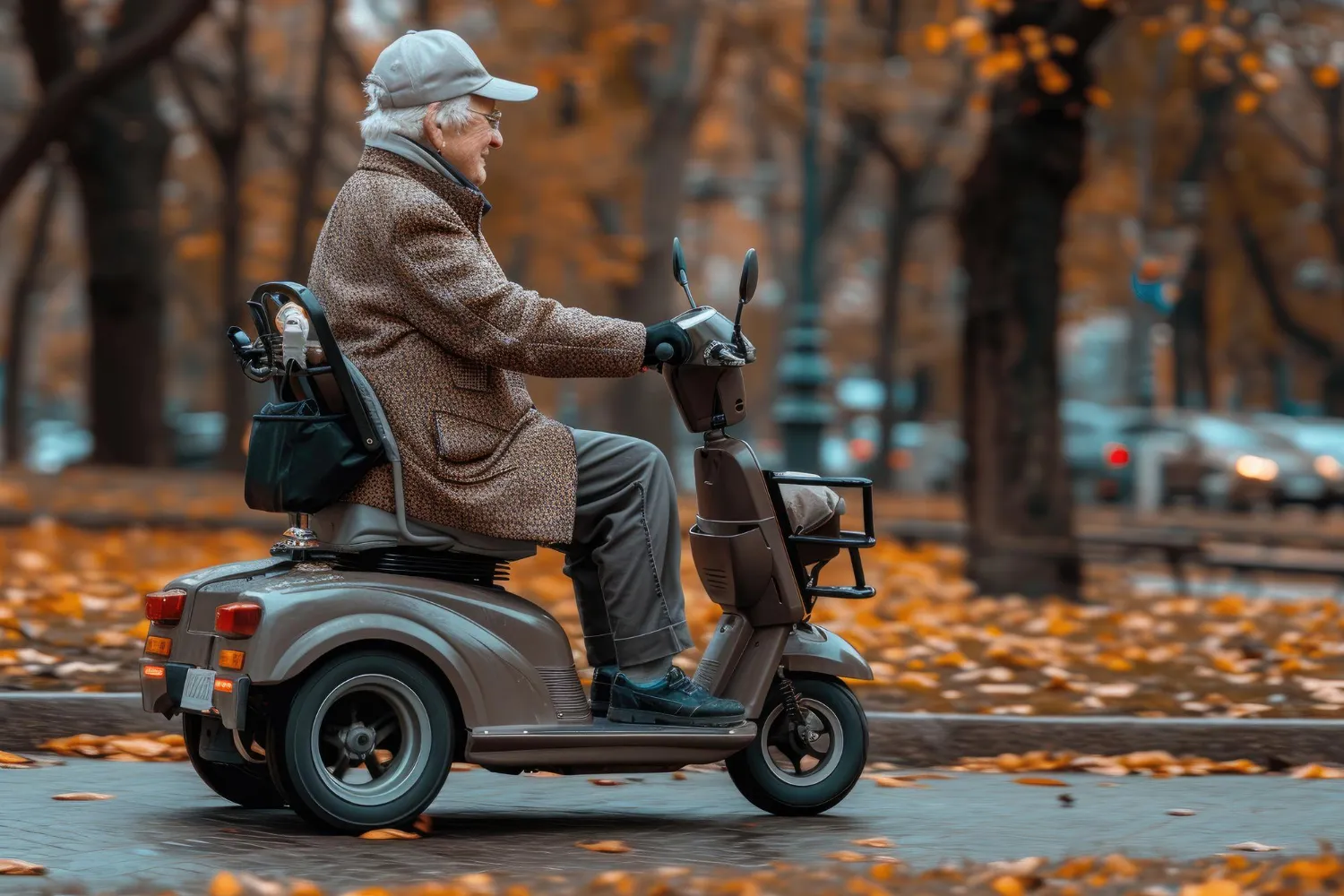Mobility scooters have become an essential tool for many individuals in Ireland, providing the freedom to move around independently and improving overall quality of life. Whether navigating through busy city streets or exploring more rural areas, choosing the right mobility scooter is key to ensuring safety, comfort, and ease of use. However, with so many options available, selecting the best one can feel overwhelming.
This guide aims to simplify the process by breaking down the most important factors to consider when choosing a mobility scooter in Ireland. From understanding your mobility needs and the types of scooters available, to considering legal regulations and safety features, we’ll help you make an informed decision that best fits your lifestyle and budget.
Table of Contents
Understanding Your Mobility Needs
Choosing the right mobility scooter is a personal decision that depends on various factors related to your lifestyle, physical condition, and the environment you live in. Before diving into specific scooter models or features, it’s essential to take a closer look at your mobility needs to ensure you select a scooter that aligns with your daily life. Here’s what you should consider:
1. Lifestyle Considerations
Your daily routine plays a significant role in determining the right type of mobility scooter for you. Consider how and where you’ll be using the scooter:
- Indoor vs. Outdoor Use: If you primarily use the scooter indoors, such as in shopping centers or homes, a smaller, more maneuverable scooter might be best. However, if your main use is outdoors, you’ll need a model that’s built for handling rougher terrain and longer distances.
- Distance Covered Daily: Consider how far you travel on a typical day. If your mobility scooter will be your primary mode of transportation, range and battery life are important. Some scooters can travel over 40 km on a single charge, while smaller models may only manage 10-15 km.
- Storage Space: If you live in a smaller space, or need to store the scooter in your car or at home, a foldable or portable scooter might be a better choice for easy storage and transport.
2. Physical Requirements
Your physical condition and comfort are key factors when choosing a mobility scooter. Here are some specific things to think about:
- Weight Capacity and Height: Mobility scooters come in different sizes and weight capacities. Make sure to choose a scooter that comfortably supports your weight and offers enough room for your height, especially in terms of leg space.
- Health Conditions: If you experience joint pain, back issues, or any other medical condition, comfort features like padded seats, adjustable armrests, and smooth suspension systems should be a priority. Additionally, some scooters are easier to get on and off, which is important if you have limited mobility or balance issues.
3. Environment and Terrain
The environment you live in and the surfaces you regularly travel on will impact the type of mobility scooter you need.
- Urban vs. Rural Settings: Urban environments tend to have smoother, paved roads and sidewalks, so a lighter scooter with good manoeuvrability might be ideal. However, if you live in a rural area or need to travel on uneven terrain like gravel or cobblestones, you’ll want a more robust, heavy-duty scooter with excellent suspension and larger wheels for stability.
- Weather Conditions: Ireland’s weather can often be rainy and windy. If you plan to use your scooter frequently outdoors, you’ll need a model with proper weather resistance, including protection for electrical components, good traction on wet surfaces, and stability to handle windy conditions.
4. Frequency of Use
How often you plan to use your scooter can help determine which features are most important to you.
- Occasional Use: If you only need a scooter for specific outings or occasional travel, a portable or travel scooter may be ideal. These scooters are lightweight, easy to fold, and store, making them convenient for part-time use.
- Daily Use: If the scooter will be your primary mode of transportation, look for models that offer more comfort, higher speed, and longer battery life. Additionally, daily users should consider the durability and service options for the scooter to ensure long-term use.
Types of Mobility Scooters: Which One is Right for You?
When it comes to choosing the right mobility scooter, understanding the different types available is essential. Mobility scooters come in various designs, each catering to different needs, environments, and user preferences. This guide will help you navigate the key types of mobility scooters and their features to find the one that best suits your lifestyle.
Choosing the Right Scooter for Your Needs
When selecting a mobility scooter, it’s essential to consider where and how often you’ll be using it. Portable scooters are great for travel, while 3-wheel models excel in manoeuvrability for indoor use. For those who need stability and power outdoors, a 4-wheel or heavy-duty scooter may be the best option. Understanding your personal requirements, the environment you live in, and the scooter’s features will help you make the best choice.
Remember, always test a scooter before purchasing to ensure it meets your comfort and mobility needs. If you’re unsure which scooter is right for you, the team at Mobility Direct can provide expert advice and guidance.
1. Portable/Folding Mobility Scooters
Ideal for: Travel, short trips, and easy storage.
Portable or folding mobility scooters are designed for convenience and ease of transport. These scooters are lightweight and can be folded or disassembled into compact pieces, making them perfect for travel or storing in small spaces, like car trunks.
Key Features:
- Lightweight and easily transportable.
- Typically have a smaller battery and limited range.
- Suitable for smooth indoor surfaces or short outdoor trips.
- Can be taken on airplanes or buses.
Best for:
- People who need a scooter for occasional use.
- Individuals who frequently travel by car or public transportation.
- Those who need a scooter for indoor use, shopping trips, or smooth pavements.
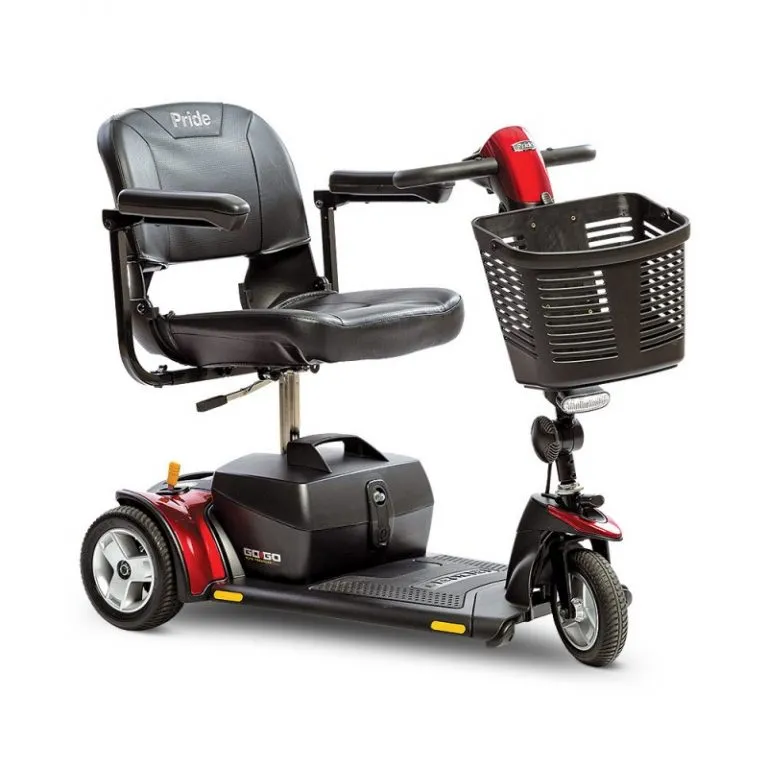
2. 3-Wheel Mobility Scooters
Ideal for: Indoor use and tight spaces.
3-wheel mobility scooters are known for their enhanced maneuverability, especially in narrow or crowded spaces. The single wheel at the front allows for a smaller turning radius, making these scooters perfect for indoor use or navigating tight corners.
Key Features:
- Greater maneuverability than 4-wheel models.
- Lightweight and often more compact.
- Good for use indoors or on smooth surfaces like shopping centers or paved walkways.
- Less stable than 4-wheel scooters on uneven terrain.
Best for:
- Individuals who primarily use the scooter indoors.
- People needing easy navigation in shops, malls, or small living spaces.
- Users who don’t require the extra stability of four wheels for outdoor terrain.
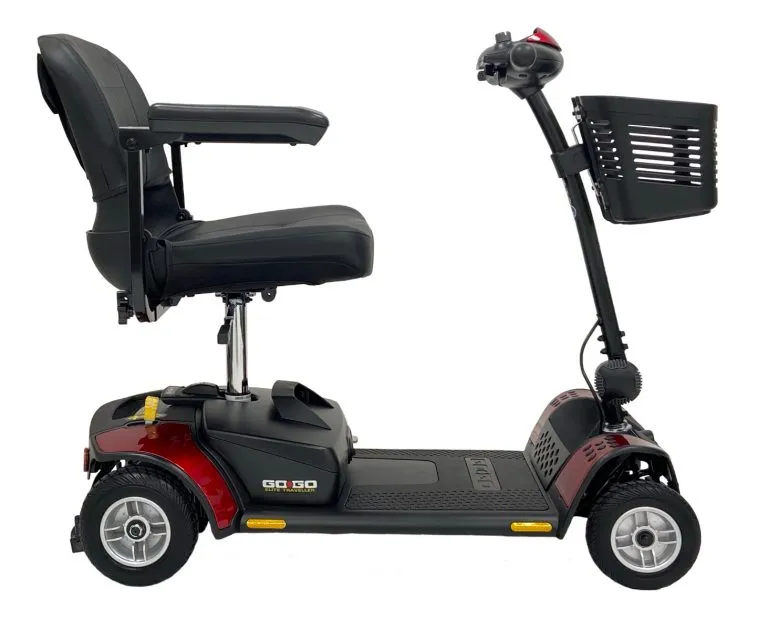
3. 4-Wheel Mobility Scooters
Ideal for: Outdoor use and stability.
4-wheel mobility scooters provide more stability and support, especially on rough or uneven surfaces. They are designed for outdoor use and can handle a variety of terrains, making them a good choice for people who need a reliable scooter for longer journeys.
Key Features:
- More stable and balanced due to the four-wheel design.
- Suitable for a variety of surfaces, including uneven pavements, gravel, and even grass.
- Heavier and larger than 3-wheel scooters, which may limit portability.
- Often have longer battery life and greater weight capacity.
Best for:
- People who spend more time outdoors, particularly on rough terrain.
- Users who need a scooter for daily commuting or longer distances.
- Individuals looking for enhanced safety and stability in a mobility aid.
4. Heavy-Duty Mobility Scooters
Ideal for: Users requiring higher weight capacity and all-terrain use.
Heavy-duty mobility scooters are built to accommodate larger individuals or those who require a scooter that can handle rugged terrain. These scooters have larger wheels, stronger motors, and can carry more weight than standard models.
Key Features:
- High weight capacity (usually up to 250 kg or more).
- Stronger motors for climbing hills or rough outdoor surfaces.
- Often equipped with advanced suspension systems for a smoother ride.
- Larger and bulkier, making them less portable.
Best for:
- People who need a high weight capacity and long-distance use.
- Individuals living in rural areas or environments with uneven terrain.
- Users who require the most powerful scooter for regular, heavy-duty use.
5. Compact Scooters
Ideal for: City living and short commutes.
Compact mobility scooters are designed for users who live in urban areas or need to navigate crowded spaces. They are similar to portable scooters but offer a bit more power and comfort while still being easy to maneuver and store.
Key Features:
- Small and easy to handle.
- Good for short commutes or everyday errands.
- More comfortable than basic portable models, with some offering adjustable seats and steering.
- Can often be disassembled for transport but may not fold.
Best for:
- People who live in cities and use the scooter for commuting short distances.
- Users who need a balance between portability and performance.
- Individuals who require a scooter that can handle sidewalks, curbs, and indoor environments.
6. All-Terrain Mobility Scooters
Ideal for: Rural living and adventurous users.
All-terrain mobility scooters are built for the outdoors and are designed to handle tough conditions. Whether it’s uneven ground, steep inclines, or off-road adventures, these scooters are perfect for people who want to remain active in nature.
Key Features:
- Large, rugged wheels for stability on rough terrain.
- Powerful motors and long battery life for extended outdoor use.
- Enhanced suspension for a smoother ride over bumps and inclines.
- Usually larger and heavier than standard scooters.
Best for:
- People living in rural or hilly areas.
- Active individuals who enjoy spending time outdoors on rough trails.
- Users who need a scooter that can handle any type of terrain or weather condition.
Key Features to Consider When Choosing a Mobility Scooter
When selecting the right mobility scooter, it’s essential to consider key features that can impact your comfort, safety, and overall experience. Here are the most critical factors to keep in mind:
1. Battery Life and Range
The battery life of your mobility scooter determines how far you can travel on a single charge, which is a crucial factor for daily use. Typically, scooters offer a range of anywhere from 10 to 30 km depending on the model and battery size. When considering your scooter:
- Daily Usage: Think about how far you travel each day. If you plan to use the scooter for long trips or errands around town, you’ll need a scooter with a longer battery life.
- Terrain: Hilly or uneven terrain can drain the battery faster, so you might need a larger battery if you live in such areas.
- Charging Time: Consider how long it takes to fully charge the battery. Faster charging times can add convenience, especially if you use the scooter frequently.
2. Comfort and Ergonomics
Comfort is crucial, especially if you plan to use the scooter for extended periods. Some scooters come with basic seating, while others are designed with advanced ergonomic features. Here’s what to look for:
- Adjustable Seats and Armrests: Ensure that the seat can be adjusted for your height and body type. Adjustable armrests and backrests can also add to your comfort.
- Cushioning and Support: A well-padded seat with good lumbar support can make a big difference, especially if you have back pain or joint issues.
- Suspension: If you plan to ride on uneven surfaces or bumpy roads, look for a scooter with a good suspension system. This feature can absorb shocks, making your ride smoother and more comfortable.
3. Speed
Mobility scooters generally come with different speed options depending on the model:
- Basic Models: Typically offer speeds between 6-8 km/h, which is ideal for indoor use or short distances.
- Advanced Models: Can reach up to 10-15 km/h, making them suitable for outdoor use, such as running errands or commuting in town.
While speed can be convenient, it’s essential to balance it with safety, particularly in urban areas with high foot traffic. Ensure that your scooter allows you to control and limit speed where necessary.
4. Portability and Storage
Depending on your lifestyle, portability and storage features may be crucial, especially if you need to transport the scooter in a car or store it in a compact space.
- Folding Scooters: Portable scooters can fold up and fit into the trunk of most cars, making them ideal for travel or day trips.
- Lightweight Models: Look for models made from lightweight materials, as they are easier to carry and lift when necessary.
- Disassembly Options: Some scooters can be broken down into smaller parts for easier storage. If you have limited space at home, this can be an important feature to consider.
5. Stability and Wheels
The stability of your scooter depends largely on its wheel configuration. There are typically two options:
- 3-Wheel Scooters: These offer better maneuverability and are ideal for indoor use or areas with tight corners. However, they may not be as stable on uneven ground.
- 4-Wheel Scooters: Provide more stability, especially on rough or uneven terrain. They are ideal for outdoor use, particularly in rural areas or places with cobblestone streets.
If you’ll be using the scooter primarily outdoors or on uneven surfaces, a 4-wheel model with wider tires may be the best choice.
6. Safety Features
Safety should always be a priority when selecting a mobility scooter. Consider these important features:
- Headlights and Indicators: For those who plan to use the scooter outdoors, particularly at night or in low-visibility conditions, headlights and indicator lights are essential for visibility.
- Braking System: Look for scooters with easy-to-use brakes. Many models have automatic brakes that engage as soon as you release the throttle, ensuring you can stop quickly when needed.
- Anti-Tip Wheels: To prevent accidents, especially when turning, many scooters come with anti-tip wheels that add extra stability.
Ensuring your scooter is equipped with these safety features will give you more confidence while driving, especially in busy or unfamiliar areas.
7. Weight Capacity
Each mobility scooter has a maximum weight capacity, and it’s important to choose one that suits your needs.
- Standard Models: Typically support users up to 100-150 kg.
- Heavy-Duty Models: These can support weights up to 200-225 kg and often come with more powerful motors and larger seats.
Be sure to select a scooter that can comfortably accommodate your weight while maintaining performance and battery life.
8. Accessories and Customization
Mobility scooters can often be customized with various accessories to suit your individual needs:
- Baskets or Storage Compartments: Useful for carrying groceries or personal items.
- Canopies and Weather Protection: Ideal for users in Ireland, where rain is frequent, to protect you from the elements.
- Elevating Leg Rests: Some scooters offer leg rests that can elevate, adding to your comfort during long rides.
Choosing the right mobility scooter depends on matching these key features to your lifestyle, environment, and personal preferences. By considering battery life, comfort, speed, portability, stability, safety, weight capacity, and custom accessories, you can make a more informed decision and find the scooter that best suits your needs.
Legal and Safety Considerations for Mobility Scooters in Ireland
When choosing a mobility scooter in Ireland, it’s crucial to understand the legal requirements and safety considerations to ensure both your personal safety and compliance with local laws. This section will guide you through the essential aspects of staying safe and legal on your mobility scooter.
1. Road Safety Regulations in Ireland
Mobility scooters are classified as “mechanically propelled vehicles” in some situations, but they have specific regulations that differentiate them from cars or motorbikes. Here are the key legal guidelines to follow:
- Public Roads Usage
While mobility scooters can be used on roads, it is generally recommended to only do so when absolutely necessary. Ideally, scooters should be driven on footpaths or pedestrian zones, where available, to ensure safety. If you need to use the road, make sure to keep to the left and use appropriate signals for turning. - Pedestrian Zones and Footpaths
Mobility scooters are allowed in pedestrian zones, and on footpaths, but the speed should be limited to ensure the safety of pedestrians. In Ireland, the general advice is to travel at walking speed on footpaths to avoid accidents. - Speed Limits
For use on public roads, mobility scooters generally have a speed limit of 6-10 km/h. It’s important to be aware of the limits in your area, particularly if you’re driving in a busy urban zone. Lower speeds are safer and reduce the risk of accidents. - Night-time Driving
If you plan to use your mobility scooter in the evening or at night, it’s essential to have proper lighting. Ensure your scooter is equipped with headlights, rear lights, and reflective strips for visibility. Wearing high-visibility clothing can also help improve safety during low-light conditions.
2. Insurance: Do You Need It?
While there is currently no mandatory insurance requirement for mobility scooters in Ireland, getting insurance is highly recommended for your peace of mind. Here’s why:
- Protection Against Theft or Damage
Mobility scooters can be a significant investment. Insurance can protect you financially if your scooter is stolen, damaged, or involved in an accident. - Third-Party Liability
If you accidentally injure someone or damage property while using your scooter, insurance can cover the costs, potentially saving you from substantial legal fees or compensation claims. - Types of Insurance Available
There are different insurance policies tailored specifically for mobility scooter users. These typically cover theft, accidental damage, third-party liability, and breakdown assistance. Research the best options to suit your needs.
3. Registration Requirements
Mobility scooters in Ireland do not need to be registered with the National Vehicle and Driver File (NVDF). This means there are no registration fees or requirements similar to motor vehicles. However, it’s important to have proper documentation of your scooter purchase, in case it’s ever needed for insurance or service purposes.
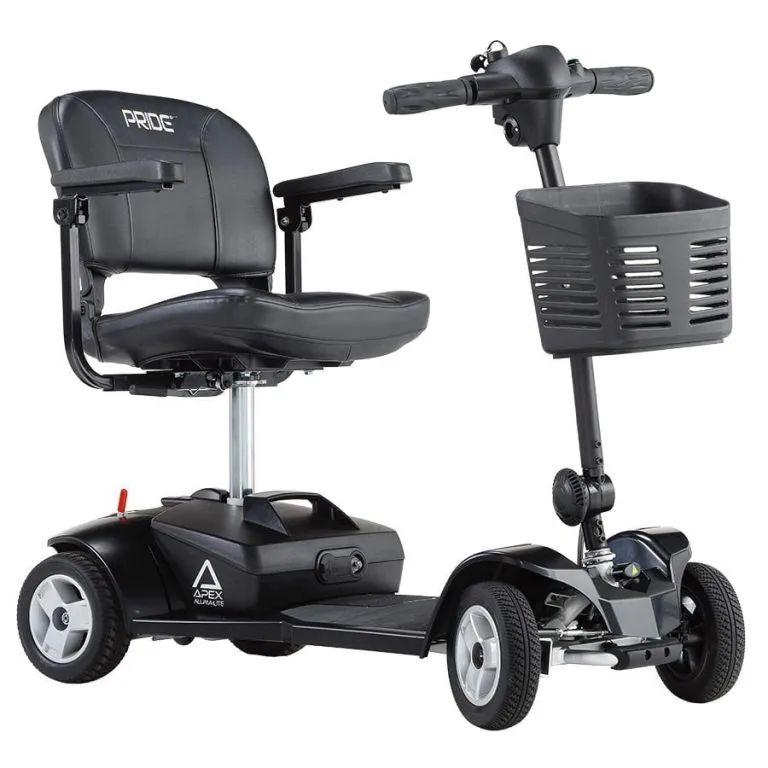
4. Safety Features to Look for
To enhance your safety and make sure your mobility scooter is road-legal, consider these critical features:
- Braking Systems
Make sure the scooter has a reliable braking system. Many models feature both hand and foot brakes. Test the brakes during a trial run to ensure they work smoothly. - Anti-Tip Mechanism
Look for scooters with an anti-tip mechanism, which adds stability and prevents accidents, especially on uneven terrain or steep inclines. This is especially important in Ireland’s rural or hilly areas. - Indicators and Lights
Scooters used on public roads should have proper indicators, headlights, and rear lights. These features make your movements predictable to others, reducing the chance of accidents. In some cases, reflectors or additional signal lights may also be necessary.
5. Warranty and Servicing
When buying a mobility scooter in Ireland, it’s essential to consider after-sales service and warranty options. Here’s what to keep in mind:
- Check the Warranty
Most mobility scooters come with at least a 12-month warranty. Some models offer extended warranties, covering certain parts and repairs. Ensure you understand the terms of your warranty and what it includes. - Local Servicing and Repairs
Make sure that the supplier offers local servicing options in case your scooter needs maintenance or repairs. Regular servicing ensures your scooter remains safe and roadworthy, preventing unexpected breakdowns.
6. Disability Parking and Access
Though mobility scooters aren’t classified as vehicles that require parking permits, there are some key points to consider:
- Parking in Designated Spaces
In Ireland, mobility scooters do not require a specific permit to park in public places. However, be mindful of not obstructing pedestrian pathways or emergency vehicle routes. If you’re using your scooter in car parks, check for designated accessible parking areas. - Access to Public Buildings
Mobility scooters should generally have access to public buildings and transport. Under Ireland’s disability legislation, public spaces must provide reasonable accommodations for individuals with mobility needs, ensuring that entrances, lifts, and ramps are scooter-friendly.
Ensuring that your mobility scooter use is both safe and legal is essential for a smooth and enjoyable experience. While regulations in Ireland are relatively lenient, staying informed about road safety rules, insurance, and scooter maintenance will help protect both you and others. By following these guidelines, you can confidently navigate Irish roads and pathways with your mobility scooter.
Budgeting for a Mobility Scooter
Purchasing a mobility scooter is an important investment that can significantly improve independence and quality of life. However, it’s essential to understand the costs involved to make a well-informed decision. In this guide, we’ll cover everything you need to know about budgeting for a mobility scooter, including price ranges, additional costs, and available financial assistance in Ireland.
1. Mobility Scooter Price Range
Mobility scooters come in a variety of models, each offering different features, sizes, and capacities. Here’s a breakdown of the typical price ranges for various types of mobility scooters:
- Portable/Folding Scooters:
These are lightweight and designed for easy transport. They tend to be more affordable, with prices ranging from €800 to €1,800. They are ideal for short trips and smooth surfaces but may not offer the best comfort or durability for everyday use. - 3-Wheel Scooters:
Known for their maneuverability in tight spaces, these scooters are great for indoor and outdoor use in urban areas. Prices for 3-wheel scooters typically range from €1,200 to €3,000, depending on the model and features. - 4-Wheel Scooters:
Offering more stability, these scooters are better suited for outdoor use and rougher terrains, such as cobblestone streets or rural pathways. Expect to pay between €2,000 and €4,500 for a 4-wheel scooter with good features. - Heavy-Duty Scooters:
For users who need higher weight capacities and greater power, heavy-duty scooters are the best option. These models can cost anywhere from €3,000 to €6,000, as they are designed for long-distance use and challenging terrain.
2. Additional Costs to Consider
Aside from the base price of the mobility scooter, there are a few other costs that should be factored into your budget:
- Batteries and Charging Equipment:
Most electric scooters come with a battery, but replacements or additional batteries can cost anywhere between €100 to €500 depending on the model and battery capacity. You may also need to purchase a charger or consider the cost of electricity for charging the scooter regularly. - Accessories:
Many people customize their scooters with accessories such as baskets, weather covers, or additional storage. Accessories can range in price from €50 to €300, depending on what you need. - Maintenance and Repairs:
Just like any vehicle, mobility scooters require regular servicing to ensure optimal performance. Annual maintenance costs can range from €100 to €300, and repair costs will vary depending on the part or service required. - Insurance:
While not mandatory in Ireland, some users opt for insurance to protect their investment. Scooter insurance typically costs between €70 to €150 per year, providing peace of mind in case of theft, damage, or accidents. - Delivery Charges:
Some retailers may charge delivery fees, particularly for large or heavy scooters. Delivery costs can range from €50 to €100, depending on your location.
3. Funding and Financial Assistance in Ireland
If the cost of a mobility scooter seems daunting, there are several financial assistance options available in Ireland to help ease the burden:
- Mobility Aids Grant Scheme:
Administered by local authorities, this grant helps with the cost of purchasing necessary mobility aids, including scooters. The grant is means-tested and can cover up to 95% of the cost, depending on your income and medical need. - Housing Adaptation Grant for People with a Disability:
While primarily for home modifications, this grant can also help with accessibility needs related to mobility scooters. Like the Mobility Aids Grant, this is means-tested. - VAT Relief:
Mobility scooters are eligible for VAT exemption in Ireland, meaning you won’t have to pay VAT on the purchase, which can reduce the overall cost by 23%. - Medical Insurance or Social Welfare Support:
In some cases, medical insurance policies or disability allowances from the Department of Social Protection may cover part of the cost of a mobility scooter. Check with your insurance provider or social welfare office for specific details.
4. Tips for Budgeting Wisely
- Assess Your Needs:
Before purchasing, think about how and where you’ll use your scooter. If you only need it occasionally or for short distances, a more affordable model may suffice. For daily, long-distance, or rough-terrain use, investing in a higher-end model will save money in the long run. - Consider a Second-Hand Scooter:
If you’re working with a tight budget, consider buying a second-hand mobility scooter. Many reputable sellers refurbish used scooters and offer them at a discounted rate. Just make sure you check for warranties or service guarantees. - Test Before You Buy:
Always try out a scooter before purchasing. Test drives will help you avoid spending money on a model that doesn’t fit your needs. - Plan for Long-Term Costs:
Factor in long-term maintenance, battery replacements, and potential upgrades to ensure your scooter continues to meet your needs over time.
Budgeting for a mobility scooter involves more than just considering the upfront cost. By understanding the full range of expenses and exploring financial assistance options in Ireland, you can make an informed decision that fits your budget and improves your mobility. Whether you’re purchasing a scooter for occasional trips or daily use, planning ahead and researching your options will ensure you get the best value for your money.
If you’re ready to explore mobility scooters, visit Mobility Direct for expert advice and a wide selection to suit every need and budget.
This guide provides a clear picture of how to budget for a mobility scooter, covering both immediate and long-term considerations.
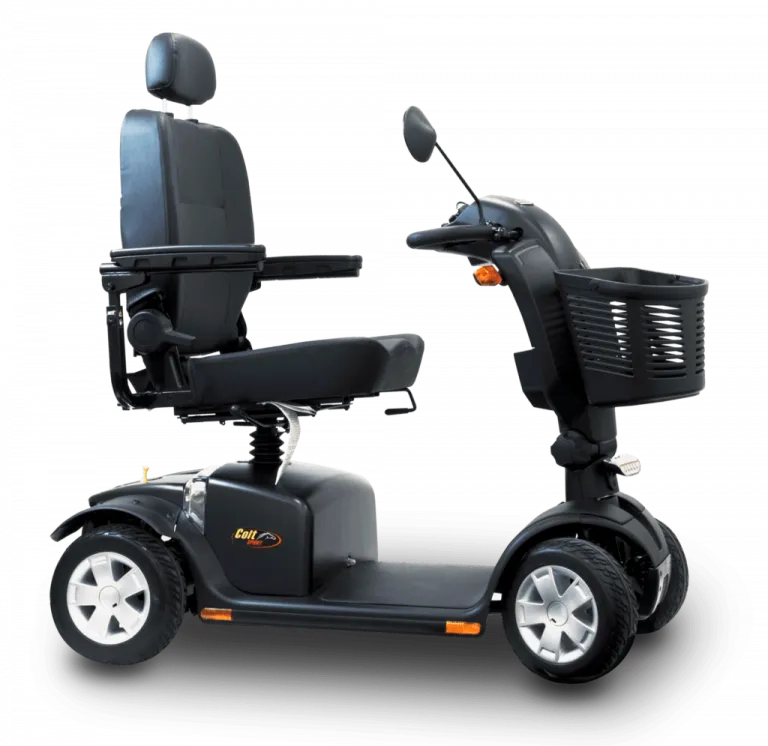
Test Before You Buy
When it comes to choosing a mobility scooter, testing the scooter before making a purchase is crucial. It ensures that the model you select not only meets your needs but also provides the comfort and performance you’re looking for. Here are the key reasons why testing a mobility scooter before you buy is essential:
1. Comfort and Fit
Every individual has unique physical needs, and mobility scooters come in various sizes, designs, and configurations. Testing the scooter allows you to assess whether it feels comfortable for prolonged use. Key aspects to check include:
- Seat Comfort: Is the seat wide enough and well-padded? Does it offer the right support for your back?
- Adjustability: Can you easily adjust the seat, armrests, and tiller to suit your height and posture?
- Legroom: Ensure there’s adequate space for your legs, especially if you’re taller or require extra room for comfort. Testing different models helps you identify which one fits your body and offers the most comfort for daily use.
2. Manoeuvrability
Different scooters have varying turning radiuses and levels of manoeuvrability, which is important depending on where you plan to use it. For example:
- Indoor Use: If you need a scooter for tight spaces like your home, stores, or shopping centers, you’ll want to test how easily the scooter can navigate corners and confined areas.
- Outdoor Use: If you plan to use the scooter outdoors on uneven terrain or rural pathways, you should test how stable and smooth the ride feels on different surfaces. During your test drive, practice turning, reversing, and navigating both tight spaces and open areas to see how well the scooter handles.
3. Stability and Safety
Testing the scooter also lets you experience how stable it feels while driving. This is especially important if you plan to use the scooter on hilly or uneven ground common in Ireland. Some points to consider are:
- Tip Resistance: Does the scooter feel balanced, or is there a risk of tipping over when turning sharply or traveling over bumps?
- Braking and Controls: Ensure that the scooter’s braking system is responsive and easy to control, allowing you to stop safely. Testing these features helps you feel confident that the scooter is safe to use in various environments and won’t pose a risk in your day-to-day life.
4. Battery Life and Range
When you’re testing a scooter, ask the retailer for a breakdown of the battery performance based on real-world usage. During the test drive, check:
- Power Output: How does the scooter handle inclines and longer distances?
- Battery Indicator: Is the battery indicator easy to read and reliable? How long does the scooter last on a full charge under normal conditions? Testing will give you a clearer idea of whether the scooter’s battery life meets your daily needs, especially if you plan to cover longer distances.
5. Test Local Terrain
Ireland’s weather and terrain can vary significantly, from cobblestone streets and rough pathways to slick, rainy roads. Testing the scooter in real-world conditions close to your home or the areas you plan to use it will give you an idea of how it performs. Take note of how the scooter handles:
- Bumpy or uneven ground.
- Wet and slippery surfaces.
- Hilly or inclined pathways. Testing it locally helps you make sure that the scooter is suitable for your environment, ensuring it performs as expected no matter the conditions.
6. Check for After-Sales Support
When testing, it’s also important to gauge the after-sales support offered by the retailer. Reliable after-sales service is essential for maintaining your scooter, so ask questions such as:
- Is there a warranty included?
- What kind of servicing and repairs does the retailer offer?
- Are spare parts readily available? Knowing that you can count on ongoing support and service will give you peace of mind when investing in your mobility scooter.
Taking the time to test a mobility scooter before buying ensures that you make the right choice for your comfort, safety, and lifestyle. Don’t hesitate to ask for a test drive at Mobility Direct or your local mobility aid provider to experience the different models and find the perfect scooter that meets your needs.
3 question to ask before buy
Mobility Scooters Rental Options in Ireland
Renting a mobility scooter can be a great alternative for individuals who need temporary access to mobility support. Whether you’re recovering from an injury, need a scooter for travel, or want to try one before committing to a purchase, renting offers a flexible and affordable solution. In Ireland, there are several rental options available, allowing people to maintain independence and mobility without the long-term financial commitment.
Why Rent a Mobility Scooter?
Renting a mobility scooter offers several advantages, particularly for those who only need one on a short-term basis. It can be an excellent option for visitors to Ireland who want to explore the country without worrying about mobility limitations. Additionally, individuals recovering from surgery or experiencing temporary mobility issues may find renting more cost-effective than purchasing a scooter outright. Renting also provides the opportunity to test different models and features before making a long-term decision.
Types of Scooters Available for Rent
Rental companies in Ireland typically offer a range of mobility scooter options to suit different needs. These include portable folding scooters, which are ideal for travel, as well as more robust models designed for outdoor use and rough terrain. Depending on your requirements, you can rent compact scooters for easy transport or heavy-duty models for increased stability and weight capacity. Many rental companies also provide flexible rental periods, ranging from daily to monthly rates.
What to Consider When Renting a Scooter
When renting a mobility scooter in Ireland, there are several factors to consider. First, it’s important to choose a scooter that matches your specific mobility needs and the environment you’ll be using it in. For example, if you’re navigating city streets, a smaller, more maneuverable scooter might be best. On the other hand, if you’re exploring rural areas with uneven terrain, a sturdy four-wheel scooter may be more appropriate. Additionally, ensure that the rental company offers proper insurance and support services in case of breakdowns or repairs during your rental period.
Cost and Availability of Mobility Scooter Rentals in Ireland
The cost of renting a mobility scooter in Ireland can vary depending on the model, rental duration, and additional services. Prices typically range from €20 to €50 per day, with discounted rates for weekly or monthly rentals. Many Irish rental companies also offer free delivery and collection services within certain areas, particularly in larger cities like Dublin, Cork, and Galway. It’s advisable to book your rental in advance, especially during peak tourist seasons, to ensure availability and secure the best rates.
Final words
Renting a mobility scooter in Ireland provides a practical, flexible solution for those who need temporary assistance with mobility. Whether you’re a visitor looking to explore the country, recovering from an injury, or simply testing different models before making a purchase, the variety of rental options ensures you can find the right scooter for your needs. From lightweight, portable scooters to heavy-duty models designed for outdoor use, rental companies in Ireland offer a wide range of choices. When renting, consider factors such as your environment, duration of use, and insurance options to ensure you get the best value and a scooter suited to your requirements. With affordable prices, flexible rental periods, and convenient delivery services, renting a mobility scooter can help maintain your independence without the long-term financial commitment.

